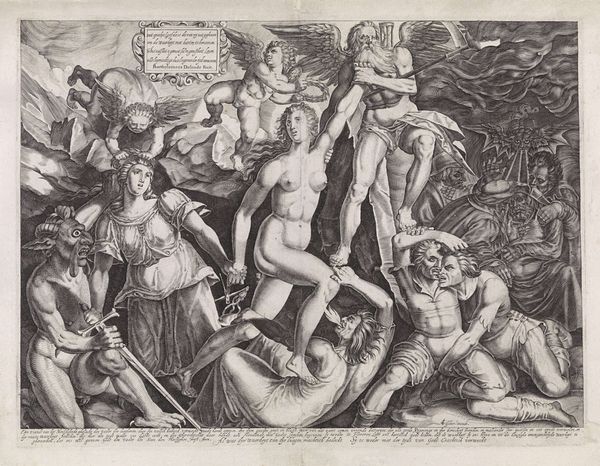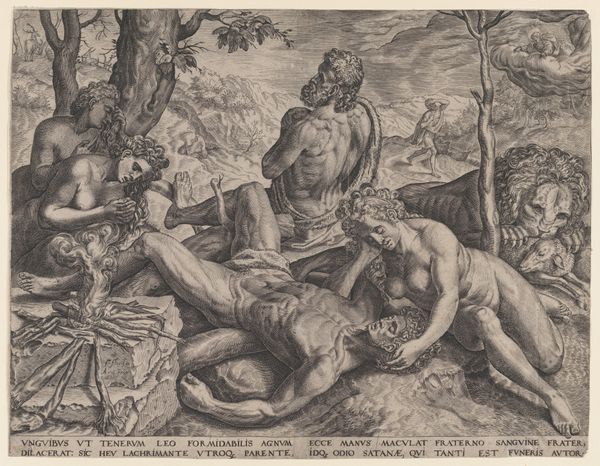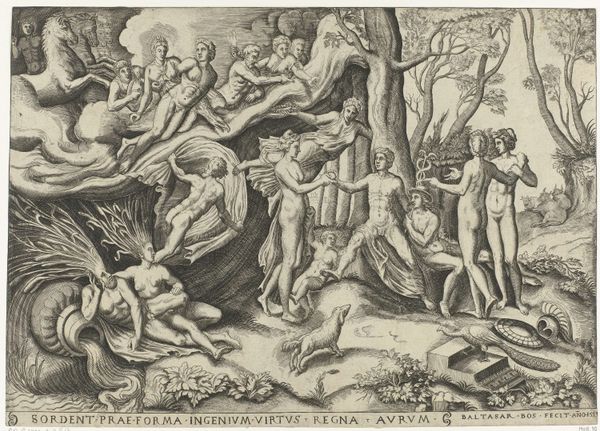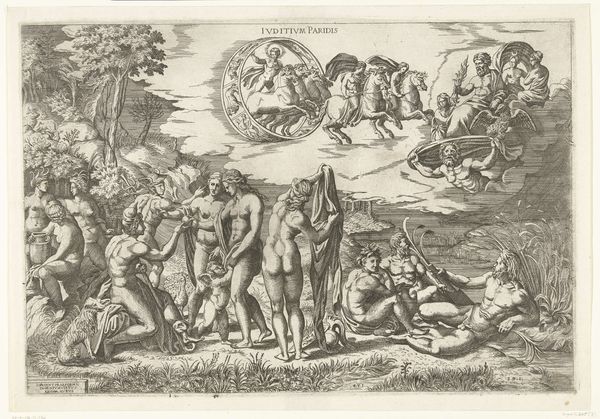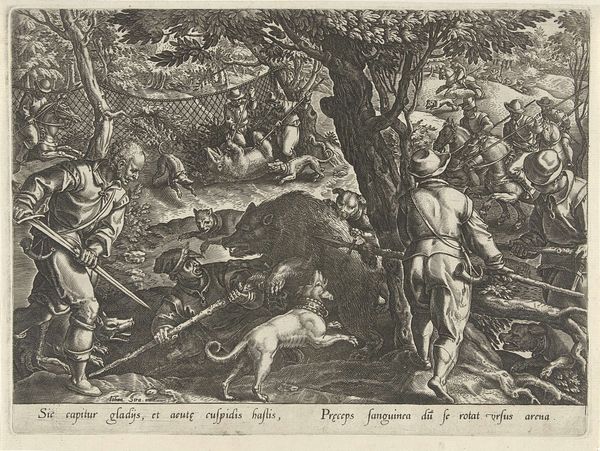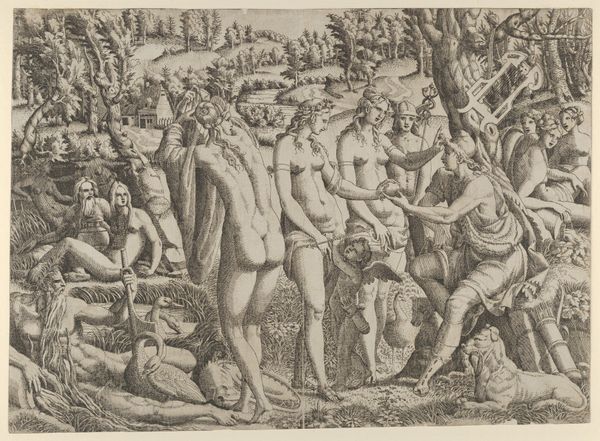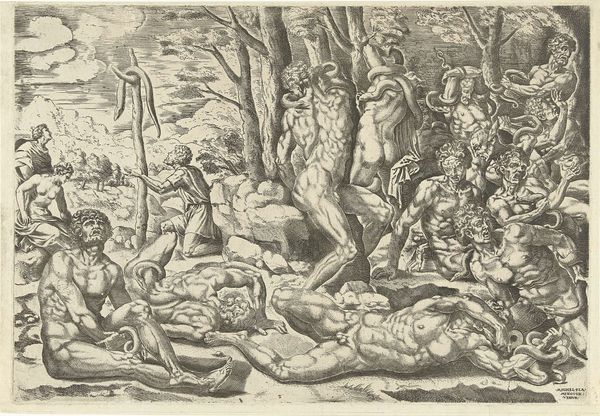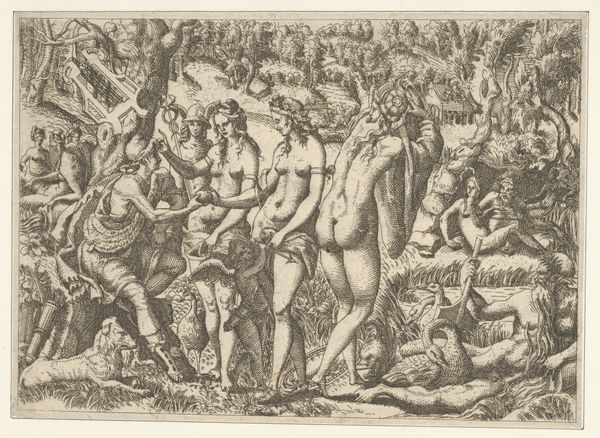
De Waarheid en de Tijd onthullen het broedsel van de paus, ca. 1585 1584 - 1585
0:00
0:00
pietervanderheyden
Rijksmuseum
print, engraving
#
allegory
#
pen drawing
# print
#
figuration
#
11_renaissance
#
line
#
history-painting
#
northern-renaissance
#
engraving
Dimensions: height 215 mm, width 259 mm
Copyright: Rijks Museum: Open Domain
Curator: This engraving, dating from around 1585, is attributed to Pieter van der Heyden. It's called "De Waarheid en de Tijd onthullen het broedsel van de paus," or "The Truth and Time Unmasking the Brood of the Pope." It's a fascinating piece of propaganda. Editor: It’s definitely eye-catching. The stark contrast between light and shadow created by the engraving technique really emphasizes the chaos and drama of the scene. You’ve got this central figure of the Pope being sort of… assaulted? By allegorical figures. It feels very active, very turbulent. Curator: Indeed. It’s steeped in the political and religious turmoil of the time. Look at how “Truth” and “Time” are literally unveiling the Pope to expose the “brood,” a collection of monstrous figures symbolizing corruption and deceit. This print circulated widely during the Dutch Revolt, serving as powerful visual rhetoric against Spanish rule and the Catholic Church. Editor: It’s interesting to see how the material process of printmaking was used for such overtly political ends. The sharpness of the engraved line, the way the image could be reproduced en masse… it’s all contributing to this dissemination of anti-Papal sentiment. Notice the detail in the Pope's garments, and the way the bodies of "Truth" and "Time" contrast so strongly with those elaborate fabrics; really sets them up as opposing forces in terms of their texture and surface qualities. Curator: Precisely! The artist, or rather the printmaker working from someone's design, employed the reproductive capabilities of the medium to spread a particular viewpoint. The inclusion of coats-of-arms and inscriptions makes explicit references to political entities and reinforces its message within a specific historical context. Editor: Absolutely. It is a clear visual argument intended for a broad audience. The composition directs your gaze; those allegorical figures physically pushing, forcing the revelation. A potent example of how the production and consumption of images intertwined with political agency. Curator: Yes, it's a testament to the power of visual media in shaping public opinion during times of conflict. An example of how art became an integral part of socio-political discourse during the Renaissance. Editor: Seeing it now, you realize how ingrained that approach still is. Even today the line between art and propaganda continues to be interrogated, redrawn. A constant renegotiation that’s definitely evident when looking at how things are created.
Comments
No comments
Be the first to comment and join the conversation on the ultimate creative platform.
